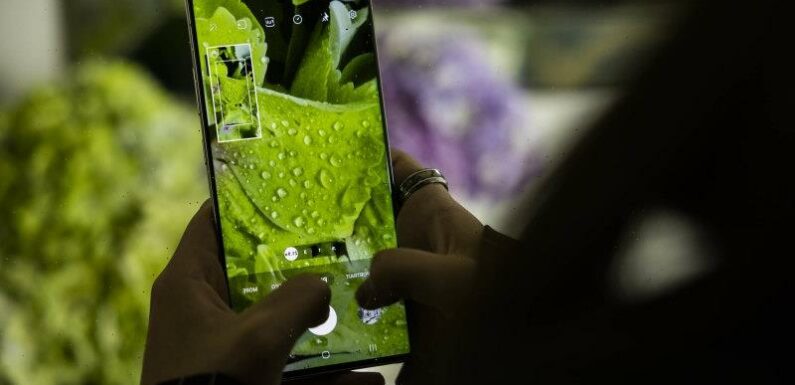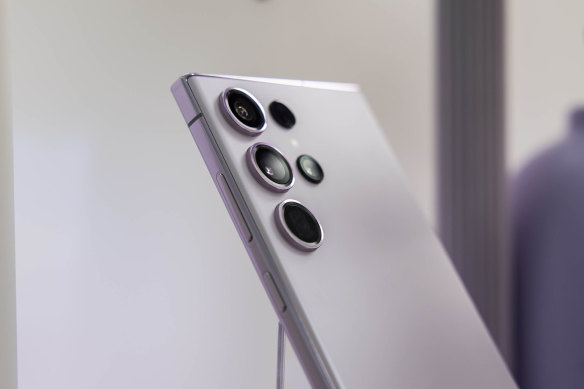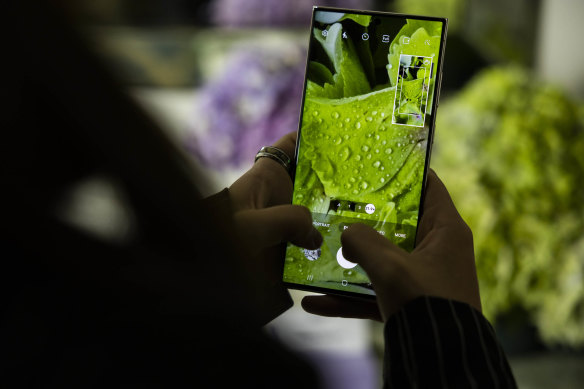
Cameras have always been integral to the smartphone experience. As our phones have become more powerful and connected, the cameras have enabled us to send what we see to anyone in an instant, or post it online for our friends (or the whole internet) to share. So it’s no surprise that camera quality continues to rank among the top considerations when people are buying a new phone, or that the likes of Samsung, Apple and Google consistently leverage new hardware and AI for camera tricks and improvements.
But, how important it is to have the absolute best camera?
The Samsung Galaxy S23 Ultra has four main cameras, with the notable upgrade from last year being a 200MP main sensor.
Samsung’s latest Galaxy S23 Ultra starts at $1950 and promises an enormous 200MP (megapixel) main camera, as well as three other rear cameras, and up to 100x digital zoom. Higher numbers aren’t necessarily better in either of those specifications, but given most high-end phones stick to around 50MP on the main camera and around 20x maximum digital zoom, Samsung is clearly gunning for superiority in the space. So, what can you actually do with it?
To start with the 200MP, it does seem genuinely useful, but in an invisible kind of way. The phone uses the extra detail for faster and more reliable autofocus, for example. By default, the camera makes groups of sixteen pixels each as it processes the visual information to punch up the colours, make a high dynamic range exposure and eliminate noise, meaning you still end up with a 12MP photo instead of a 200MP one.
All the photos I took this way came out clean and very sharp, if sometimes a bit too vivid for my taste, and were generally better in the detail than my iPhone 14 Pro Max or Pixel 7 Pro. But it’s tough to know exactly how much of that is to do with the huge 200MP sensor, and how much is to do with hardware and software elsewhere.
Photo enthusiasts don’t have to stick with that default route though; you can demand the phone outputs a full 200MP image. That’s not really recommended though. You will get a lot more detail, so you can zoom right in and crop to your heart’s content, but the pictures are duller, noisier and take up heaps of space. An in-between option of 50MP is a better choice, if you really need huge images for editing.
Where the latest iPhones really struggle to hold a focus up close, the Ultra easily produced a clear image only two or three centimetres away.
There’s also a Pro mode, which lets you manually control the focus and aperture speed like a proper camera, and a separate RAW app for taking images in the DNG format for if you really want to just get the plain information from that big sensor and take it to a PC for editing yourself.
But that’s only one of the four cameras on the back of the phone. What about the others, which are hardware-wise the same as last year’s S22 Ultra, and that purported 100x zoom?
The bottom-most shooter is a 10MP, 230 millimetre telescope camera, meaning it sits vertically inside the body of the phone using an angled mirror to see out, and produces a native 10x optical zoom. If you keep zooming beyond that point, the phone will essentially be taking a crop of that image, and after you hit the shutter it will use AI and a lot of sharpening in an attempt to produce an intelligible picture, which is tough at 30x and even harder at the maximum 100x.
The ultra-wide camera and range of zoom lenses makes the Ultra great for very close or very far subjects.
To be honest, it’s hard to think of use cases for a 100x smartphone zoom apart from taking pictures of the moon and spying on your neighbours, and it isn’t that good at either. The image stabilisation cleverly latches on to what it thinks is the subject, or any object you tap on, so you can get results without a tripod. But you won’t see a clear image until after the shot is processed, if at all, and even in ideal lighting you get a lot of wobbly artefacts as the phone tries to remove noise and take a guess at where to create detail and texture. Having that 10x lens as a starting point means you’ll get better 15x or 20x crops than other phones, but they generally aren’t pretty.
To one side of the camera stack is another 10MP telephoto camera, this one at 3x zoom. Given enough light, you can get really impressive results at both 3x and 10x, which gives you a bit more flexibility over the fanciest iPhone (3x only) or Pixel (5x only).
I was also very impressed with the S23 for macro photography. Where the latest iPhones really struggle to hold a focus up close, the Ultra easily produced a clear image only two or three centimetres away. Which is thanks to the fourth camera, an ultra-wide. Of course, doing that with enough light is tricky, but I also got great results at 3x zoom from around 6 centimetres away, and 10x zoom from around 20 centimetres, great for details on small things like bugs.
The S23 Ultra gives a fantastic photography experience overall, and I’m reasonably confident in saying its camera performance is superior to its rivals. But I’m not sure that’s the best question to be asking, especially since the phone is significantly more expensive, and the difference is small enough that it’s likely to be outweighed by other considerations; you might like iOS better as an operating system for example, or be very keen on the Pixel’s design or much lower cost. The Ultra has unique benefits of its own besides the camera too, like its very satisfying stylus.
We’ve reached a place in smartphone photography where there are almost no wrong choices. I’ve taken very good pictures on $400 phones, and for most people who take photos for keepsakes, to post online or send to people (i.e. not people doing extensive manual post-editing or professional photo work), the result isn’t all that different.
I’d also argue the true frontier for smartphone photography is more in the computational tasks than in the hardware, for applications such as blurred backgrounds, low-light shots and astrophotography, where all three of the major brands are very competitive in their high-end phones.
Get news and reviews on technology, gadgets and gaming in our Technology newsletter every Friday. Sign up here.
Most Viewed in Technology
From our partners
Source: Read Full Article

